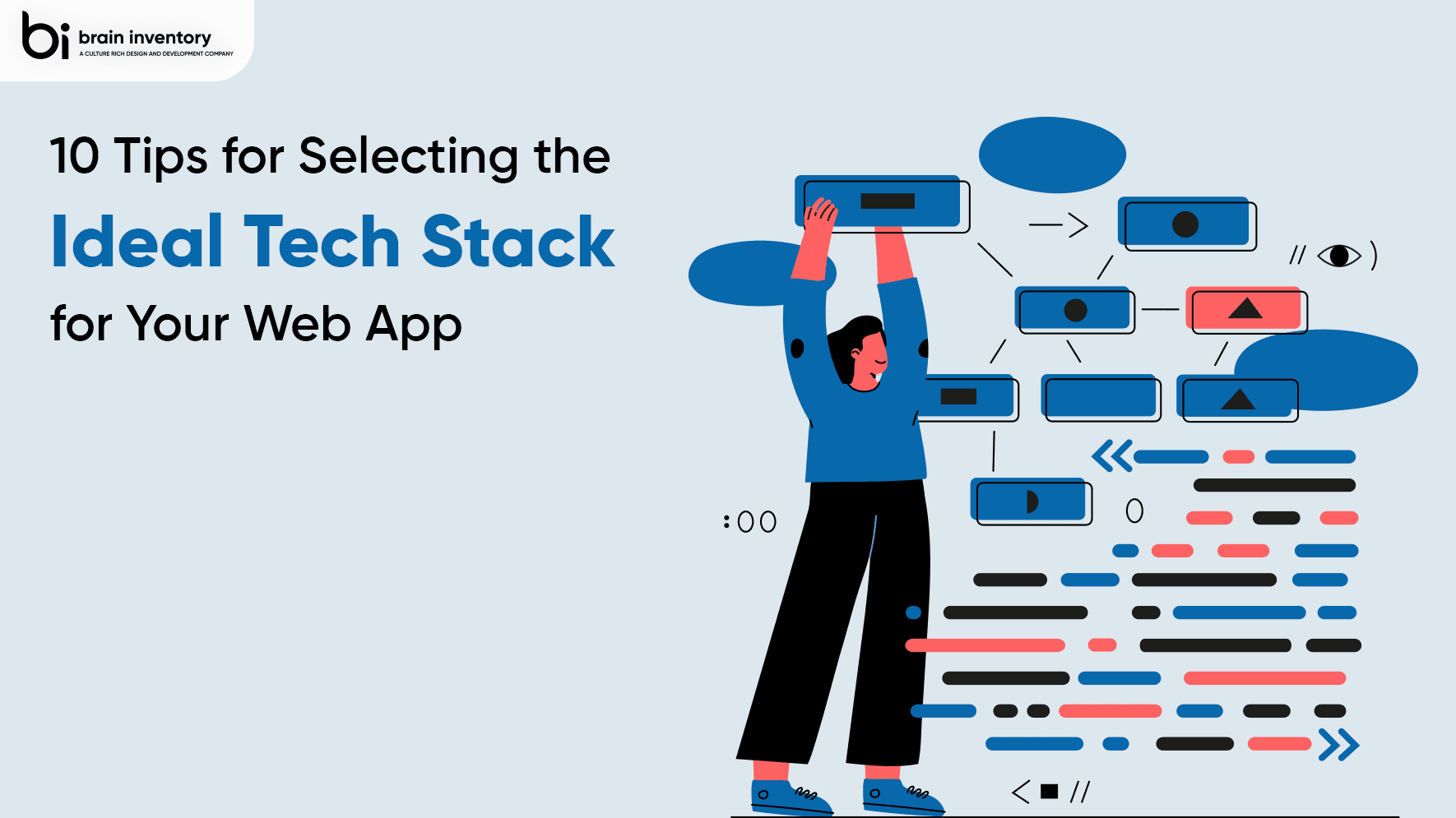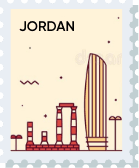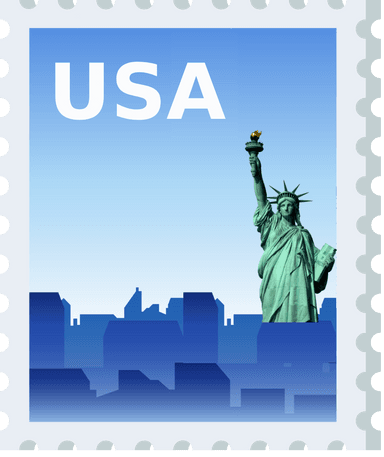10 Tips for Selecting the Ideal Tech Stack for Your Web App

Quick Summary: To build a website, one must decide which technologies to use. It is important to consider project specifics, to have years of practice in various technologies, and to know how projects are organized before making your choice. Here we offer 10 ways to pick a technology stack for web development.
What Is a Web Development Stack?
A web development stack, often referred to as a tech stack, is a combination of programming languages, frameworks, libraries, databases, and tools that developers use to build and maintain web applications. It’s a comprehensive set of technologies that work together to enable the creation of web-based software solutions. A typical web development stack consists of several layers:
Front-end (Client-Side): This layer focuses on what users interact with directly in their web browsers. It includes technologies like HTML (Hypertext Markup Language), CSS (Cascading Style Sheets), and JavaScript. Frameworks like React, Angular, and Vue.js are commonly used to streamline front-end development.
Back-end (Server-Side): The back-end handles server-side logic, database interactions, and overall application functionality. Common programming languages for back-end development include Python, Ruby, Java, PHP, Node.js, and C#. Frameworks such as Ruby on Rails, Django, Express.js, and Laravel are often used to simplify server-side development.
Database: This layer involves choosing a database system to store and manage your application’s data. Common options include relational databases like MySQL and PostgreSQL, NoSQL databases like MongoDB and Cassandra, and in-memory databases like Redis.
Server: The server layer hosts your web application, making it accessible to users over the internet. Popular web servers include Apache, Nginx, and Microsoft IIS (Internet Information Services).
Operating System (OS): The choice of the operating system often depends on the server’s requirements. Common server OS options include Linux distributions (e.g., Ubuntu, CentOS), Windows Server, and others.
Development Tools: Developers use a variety of tools for coding, testing, debugging, and version control. Examples include code editors (e.g., Visual Studio Code, Sublime Text), version control systems (e.g., Git), and integrated development environments (IDEs) like Eclipse and IntelliJ IDEA.
Hosting and Deployment: Deciding where and how to host and deploy your web application is crucial. Options range from traditional on-premises servers to cloud platforms like AWS, Google Cloud, and Microsoft Azure. Platform-as-a-Service (PaaS) offerings, like Heroku and Netlify, simplify deployment.
Frameworks and Libraries: Developers leverage pre-built frameworks and libraries to expedite development and ensure code quality. For example, the Laravel framework for PHP and the Express.js framework for Node.js provide essential building blocks for web applications.
Security and Authentication: Incorporating security measures and authentication methods is vital to protect your web application from vulnerabilities and unauthorized access. Technologies like OAuth, JWT (JSON Web Tokens), and SSL/TLS encryption are commonly used for security.
Scalability and Performance Tools: As your web application grows, you’ll need tools and technologies to ensure scalability and optimal performance. Load balancers, caching mechanisms, and content delivery networks (CDNs) can help with this.
10 Tips to choose the right best tech stack
The size, type, and complexity of the project: The complexity of the development process depends on the characteristics of the task. The biggest projects have a ton of serious features and functionality that are often dependent on different technology frameworks or libraries, while smaller ones can be developed using the standard abilities of the programming language.
Speed and functionality of the developed web resource: It seems to be the most important approach when designing a web application is to define the target group and understand what functionality should your software have and which problems should it solve. It’s even better if you understand what is already available on the market and which additional specifications your software needs to have. If not, bounce from idea to idea until you find something unique.
Expected load, productivity, and reliability of the system: Here, we’ll compare the technologies’ capabilities that determine the website operating characteristics, such as load time and processing the expected number of simultaneous requests. This is important for an organization to ensure the stable and trouble-free operation of a website.
The flexibility of the tech stack: The conclusion about solution flexibility can be made at the very beginning of the project specification. It’s important to think about the ecosystem where this solution will work, particularly, its resistance to frequent changes. Solutions that are flexible enough to allow changing business requirements and sometimes even more than that will ensure the system’s longevity. The range of modeled use cases will be the main indicator of whether the chosen technology will be capable of solving a wide range of tasks and keeping up with future development.
Project scalability: Scalability is the ability of a software system, network, or process to handle a growing amount of work, or its potential to be enlarged to accommodate that growth.
Tech stack popularity and improvement potential: Expert communities are essential for keeping up with all the latest developments in the Web technologies domain. Sometimes, developers have to use not yet the most popular technologies for their projects so that they simplify their work. However, by doing research online they can find a lot of useful information about those technologies and other ways to make their projects more interesting.
Data security and privacy: Data security is a critical layer in the planning of your web application. As data is the heart of an application, keeping it secure from hacking and illegal usage is a priority. Many times, security is lost at the development stage by putting up vulnerable programming code or choosing incorrect frameworks and libraries.
Project schedule and budget: Your tech stack defines the speed of development for your company which is definitely critical to achieving your overall objectives. Although everyone involved in making decisions about technologies and tools should be aware of the long-term cost of using those technologies, this is often overlooked as companies are typically focused on achieving quick results with minimal investment.
Availability of a sufficient number of specialists: You can find a rich talent pool of professionals well-versed in the languages, frameworks, and components essential for your chosen web development technology stack. This is a crucial factor influencing the cost–quality balance. Since the labor market has many talented programmers, it could be a good idea to hire one from another country.
Compatibility and integration with other solutions: When creating your web resource and considering how to develop it, you should consider that there are different devices with different screen sizes and operating systems that might use your application. Additionally, your application may be combined with other software and thus it needs to be compatible with them.
Conclusion
When choosing a technological stack for development, many nuances should be considered. There are many options for how to apply, but it is worth thinking about everything in advance. It will save time, and money and facilitate the timely launch of the finished web application. Of course, you can try to choose the best stack independently for web development. And often they achieve a lot, spending time on trial and error. Or you can use the services of a software development firm. Web app development agency Brain Inventory maintains comprehensive technical as well as domain knowledge in various industries.
The expertise of our developers covers Bundled ERP, e-commerce website design and development, enterprise mobile applications, and business process management. We use the best programming languages, tools & frameworks to achieve your business goals. If you are looking for a full-service supplier who can create from concept to completion, you have come to the right place. We have the expertise, tools, and talent to make your vision a reality.

Have an idea?
Get in touch, we’d be
happy to hear from you
We are always looking out for new collaborations, whether you are a client who is passionate about a project or a talent who is interested in joining our team, our doors are always open.
locate us

India (HQ)
618, Shekhar Central, Palasia Square, A.B Road, Indore, Madhya Pradesh, 452001
+918109561401

United Kingdom
Brain Inventory, SBVS, 8 Roundhay Road, Leeds, UK, LS7 1AB
+18008209286

Canada
44 Main Street East Milton, ONCanada L9T 1N3
+4166696505

Jordan
185 Wasfi Al-Tal Street, Ammon Oasis Complex P.O Box 4724 Amman 11953 Jordan
+960770781000

USA
720 Seneca St Ste 107 Seattle, USA 98101
+1(206)6533419
if it's digital,we'll make it.
- Numetric - Online Accounting Software similar to QuickBooks
- Bloomia - Kegel exercise
- Virifi - Blockchain Powered Document Certification & Signing Platform
- Revolution Travel CRM - Custom CRM Built for Travel Agents
- Fatoura - Online Invoicing Platform
- My Fit Mantra - Your health partner
- Ocureel - Relation Building and video sharing Application